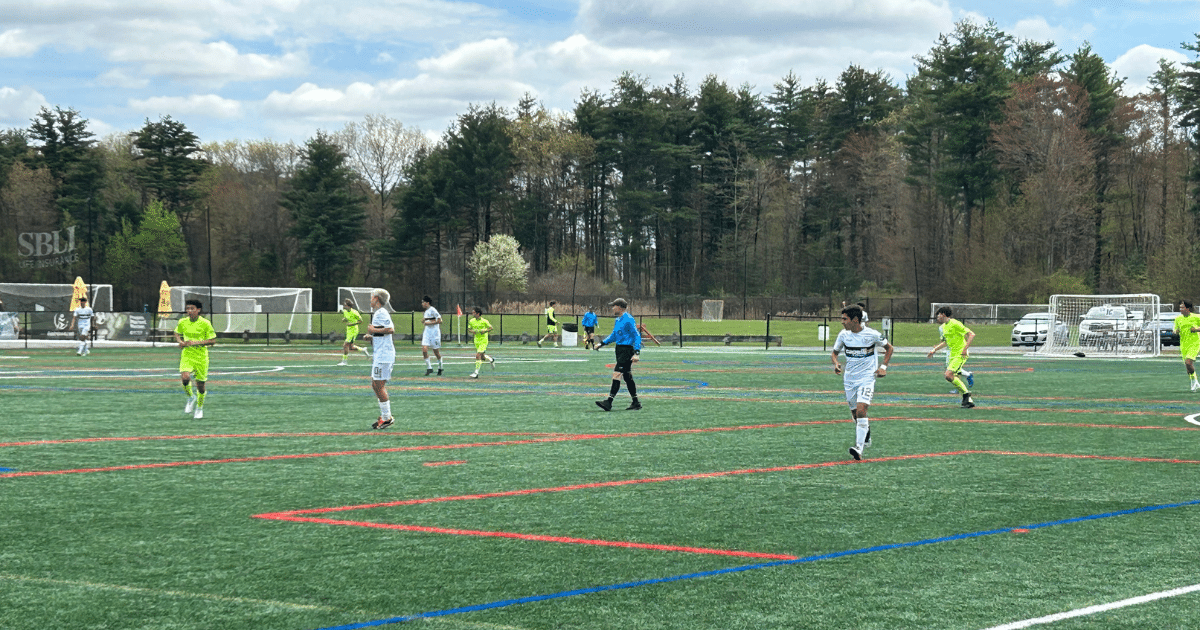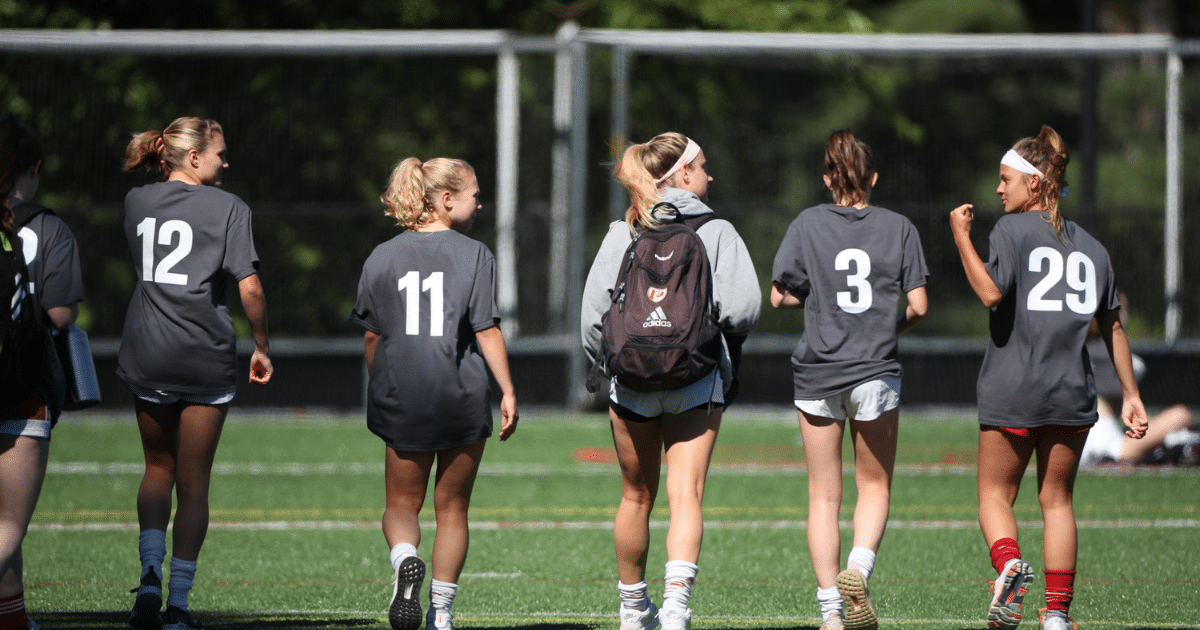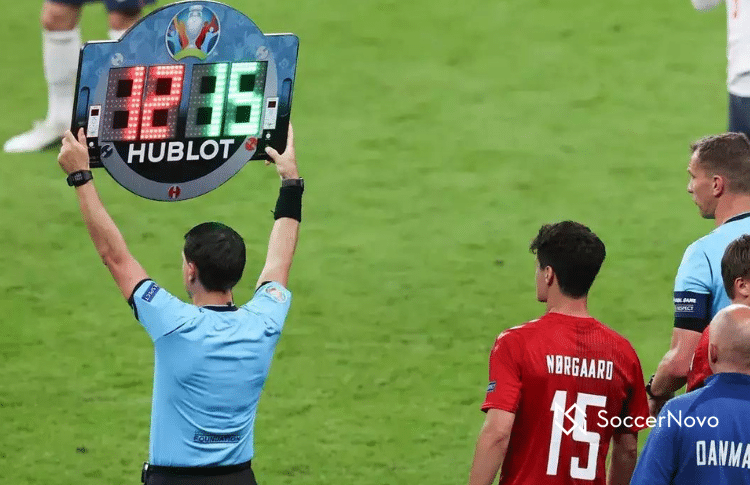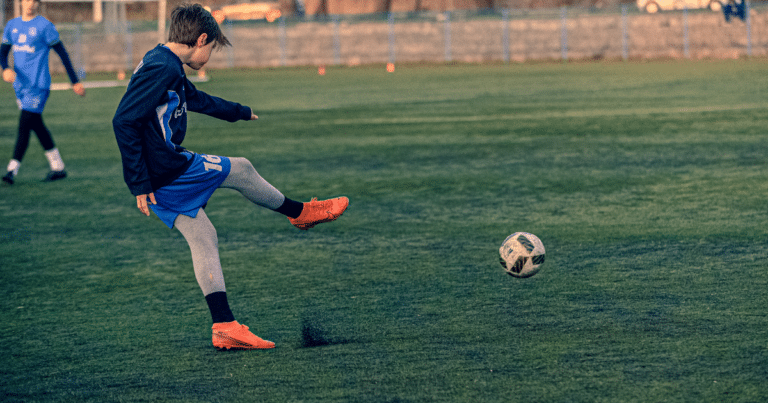What is the Typical Substitution Pattern in Soccer?

With limited subs in a soccer game, getting players in the game is strategic.
A team may be up, down, or tied…it should make a difference in the way substitutions are made.
Sometimes, coaches will want to make the change at halftime. Other times, they’ll want to wait for the second half.
At the youth level, getting kids playing time while giving a team a chance to win is important.
As players get older, it is okay to make playing time uneven. But, playing time should be performance-based and each player should have an equal opportunity to earn it.
In this article, let’s go over the timing and who to sub off first.
The exact pattern will depend on the team and players but this is a good framework to consider.
Timing of Substitutions

A typical substitution pattern can vary depending on the team’s strategy, the flow of the game, and situations such as injuries or player fatigue.
Here are the common patterns to consider:
1. First Substitution (60-70 Minutes): This is often used to put fresh legs into the game. Depending on the flow of the game, players may be fatigued at this point. It’s common to see midfielders or wingers being substituted at this stage to maintain the tempo and energy of the team.
2. Second Substitution (70-80 Minutes): Coaches might use this substitution to make tactical changes based on the game. They may want to get defensive players in if they are winning. Or, add an attacker if they are losing.
3. Third Substitution (80-90 Minutes): This substitution is often used to either run down the clock or make a last-ditch attempt to score.
Informal Substitutions
These substitution opportunities come sporadically over the 90 minutes.
- Injury or Tactical Substitutions: These substitutions are made as needed, such as when a player is injured or if the coach needs to make an immediate tactical adjustment.
- Player Performance: All players have their off days. If a player on the field is slow and lethargic compared to their best self, the coach may substitute that player off. This can happen at any point, even in the first half.
- Youth or Developmental Substitutions: Depending on the score, coaches might decide to bring in their weaker or less experienced players. They may do it sooner than later if they are down or up by a significant amount.
What Positions Get Subbed Off First?

Here are the typical positions that get subbed off first. It is usually based on the flow of the game and the work rate of these players.
1. Wingers/attacking midfielders: Wingers and attacking midfielders are frequently the first to be substituted. They use a lot of energy with their high-intensity sprints and offensive movements. Fresh legs in these positions can help maintain or improve the attacking threat.
2. Central Midfielders: Central midfielders are also commonly subbed off earlier. This is especially true if they are playing a box-to-box role that requires clocking a lot of mileage. Bringing on a fresh midfielder can help maintain control in the center of the field.
3. Strikers: Strikers may be subbed off early if they are not effective, are fatigued, or if the team needs a different type of attacker. This can add more depth to the offensive attack.
4. Full-backs: Full-backs, who are required to contribute defensively and offensively, may be substituted. In some games, the ball can find itself much more on one side of the field. This can be a lot of running. Getting fresh legs in can make it more difficult for the opposing team to score.
5. Defensive Midfielders: While less common, defensive midfielders might be subbed off first if the team needs to get a goal or add more attacking options.
Final Thoughts

Keep in mind (again) that these aren’t fixed rules or patterns to live by. They are only a frame of reference.
Substitution patterns come down to the game plan, players’ performances, and the needs of the team based on the score.
Certain players and positions may split time while other players will stay in all game. It all depends.
For any U-13 teams and younger, playing time should be spread across the team. A coach should never have a player sit out the entire game. Teams should be developing their players and programs.
If you are a player reading this, make every second count. Your coach should reward you with playing time based on your performance. Work hard, focus on what you need to do, and don’t hold back!

Written By: SoccerNovo
SoccerNovo is an independent youth soccer media brand built to help parents, players, and coaches better understand the game and the pathways available in U.S. soccer. Our mission is to make youth soccer simpler, clearer, and more accessible for everyone involved in it.
Let’s connect




